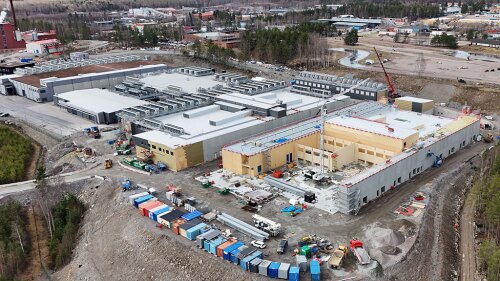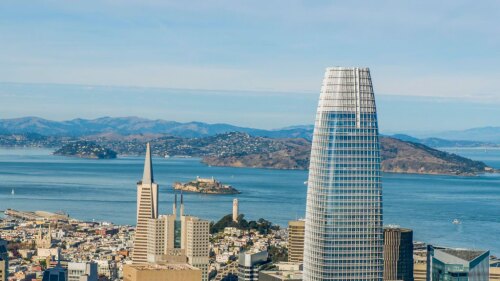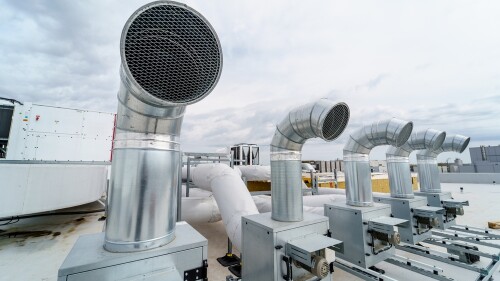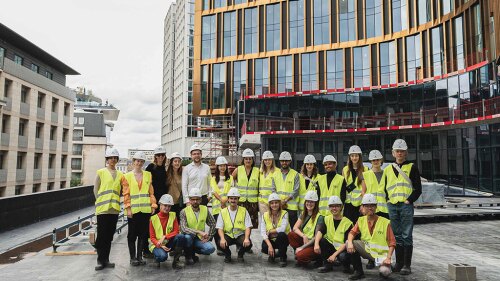When Denver’s Stapleton International Airport closed in the mid-1990s, community leaders saw a chance to create a new, 4,700-acre (1,900 ha) community just six miles east of downtown. The project’s original developer, Forest City Stapleton (sold to Brookfield Properties in 2018), kicked off an urban transformation that is now nearing completion 25 years later. Known for extensive resilience strategies to reduce the effects of drought, flooding, and extreme heat, Central Park’s 12 neighborhoods are home to nearly 35,000 residents, with 60 parks as well as extensive pedestrian and bicycle trails.
Attendees of ULI’s sixth annual Resilience Summit on May 15, 2025, immediately following ULI’s Spring Meeting in Denver, Colorado, can join a bicycle tour at “Central Park: 25 Years Later for a Sustainable Infill Neighborhood,” led by members of the development and public realm design teams.
“When you start from a clean slate, you have a unique opportunity to reconnect the street grid and create meaningful connections,” says Bill Vitek, founding principal of Dig Studio, the landscape architecture firm that worked on Central Park’s design and much of its 1,116 acres (450 ha) of parks and open spaces. “One of the great things about the community is the extensive network of bike trails and open space trails.”
Other key project collaborators included Mortenson, HDR/Calthorpe, Civitas, AECOM, and Matrix Design Group.
Shaped by resilience
Since its inception, Central Park has increased Denver’s total park area by 25 percent and was designed to manage stormwater, support biodiversity, and create community identity. “The layout of the master plan was driven by drainage needs,” Vitek says. “Large pipes under [former] runways and airfields were removed and replaced with naturalized drainage ways, and they also became open space corridors, shaping all the developable areas.” In 2013, when catastrophic flooding struck Colorado, the Westerly Creek open space showcased its flood control capabilities by filling up like a lake and protecting surrounding infrastructure and houses.
The entire park system offers a wide range of open spaces. “It goes from pocket parks within the neighborhoods to larger-scale regional parks to the 82-acre (33 ha) Central Park,” says Laurel Raines, a founding principal of Dig Studio.
As the project progressed through the years, Central Park’s landscape and architecture evolved from south to north. “The grid pattern transfers over from the south to the north side of Interstate 70, but the architectural style and even the landscape aesthetic changes quite a bit,” Vitek says. “The southern portion features architectural styles reminiscent of old Denver neighborhoods, with Victorian, Craftsman, and vernacular American Foursquare houses.” To the north, close to the Rocky Mountain Arsenal National Wildlife Refuge, the landscape becomes more native, with a rolling topography and prairie-inspired plantings. “The architecture there,” he adds, “tends to be more modern in its expression.”
“In the southern side, you’ll see more traditional landscapes, with lawns and grasses,” Raines says. “As you move north, there are logs and boulders. There’s a winding double-lane walkway reminiscent of an old farm or ranch road. It was a conscious decision to give the neighborhoods nearer the prairie a different feel.”
The landscape was specifically designed to keep water use to a minimum. Native and naturalized plants, including nearly 40,000 trees, support biodiversity, mitigate urban heat island effects, and require little watering. Denver’s reclaimed water system supplies irrigation as needed.
Social sustainability
The community features a diverse mix of housing types and price points, with affordable housing integrated throughout to ensure accessibility for residents of various socioeconomic backgrounds. Buildings feature high levels of energy efficiency, which lowers utility costs for residents.
The two town centers, each with an amphitheater, further foster neighborhood connections. “The MCA [Master Community Association] programs a lot of events,” Raines says. “For example, the town center to the north hosts art shows and bike races.”
Central Park has garnered international acclaim: a 2006 ULI Award for Excellence, a U.S. EPA Environmental Achievement Award, and the Stockholm Partnerships for Sustainable Cities Award from the King of Sweden. Nearing completion a quarter-century after its inception, Denver’s Central Park is a blueprint for sustainable urban development that balances ecological restoration, community needs, and long-term resilience.
For more on Central Park’s resilience strategies, visit https://developingresilience.uli.org/case/central-park-redevelopment/. For more on resilient building strategies and beyond, check out the upcoming ULI Resilience Summit in Denver on May 15, right after ULI’s Spring Meeting.








